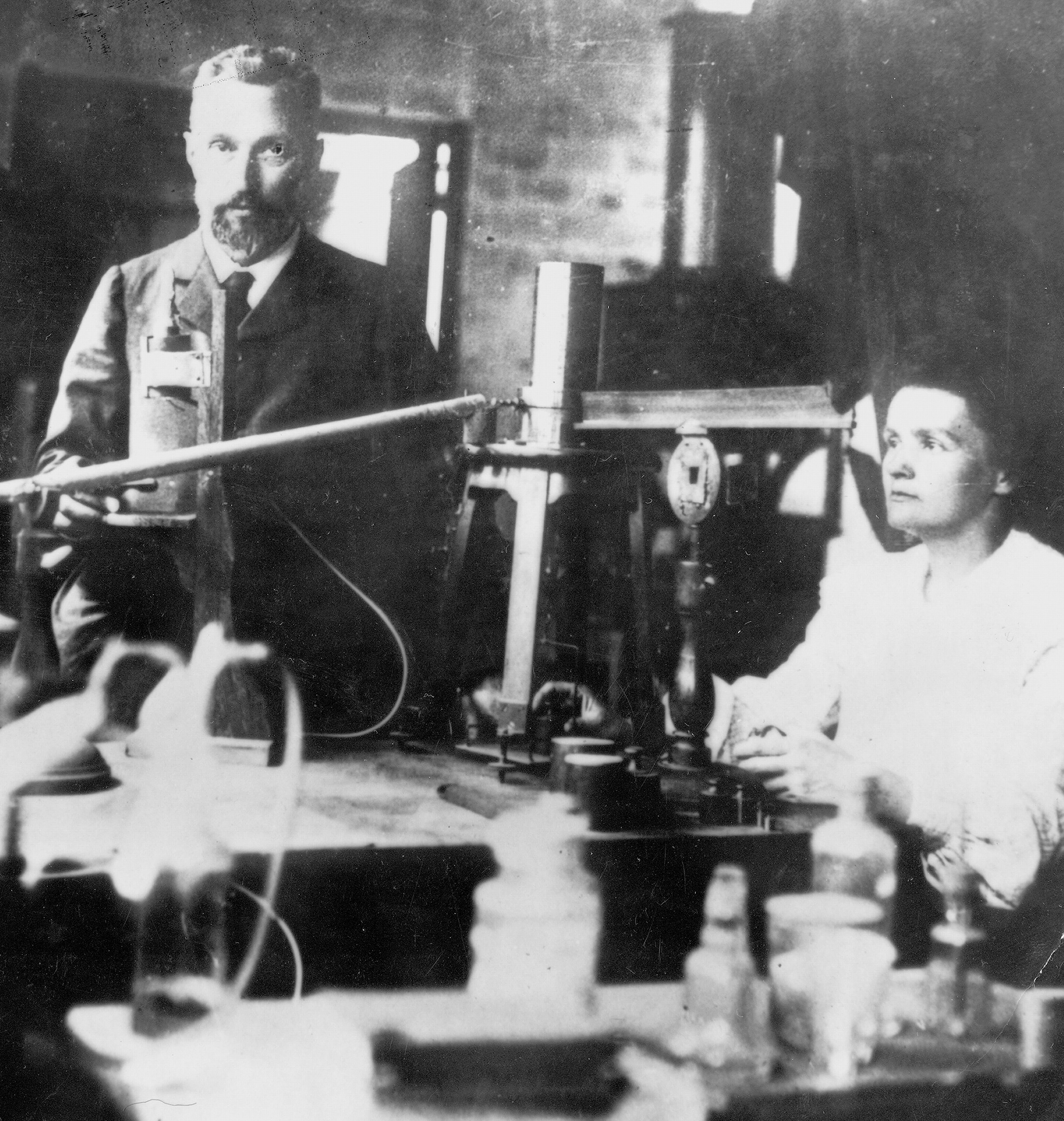Curie, Pierre << KYOO ree, pyair >> (1859-1906), was a French physicist. He shared the 1903 Nobel Prize in physics with his wife, Marie, and the French physicist Antoine Henri Becquerel. The three scientists won the award for their work with radioactivity. In 1898, the Curies had discovered two radioactive elements, polonium and radium. They had discovered radium with the help of the French chemist Gustave Bémont.

Pierre Curie was born in Paris, France, on May 15, 1859. He was mostly homeschooled. His lack of formal educational credentials sometimes hampered his rise through the scientific establishment. In 1878, he began working in the physics laboratories at the Sorbonne, a school in Paris.
At the Sorbonne, Pierre conducted physics experiments with his brother Jacques. In 1880, the two brothers discovered an electrical property known as piezoelectricity in crystals. Pierre and Jacques worked together until 1883, when Jacques moved out of Paris.
In 1895, Pierre Curie earned his Doctor of Science degree at the École Municipale de Physique et de Chimie Industrielles, in Paris. His doctoral studies focused on the relationship between temperature and magnetism. The Curie point, a temperature at which certain metals lose their magnetic properties, is named for him.
Also in 1895, Curie married the physicist Marie Skłodowska. In the late 1890’s, Marie and Pierre worked together studying the radiation given off by such chemical elements as uranium and thorium. They found that uranium ore called pitchblende gave off much more radiation than could be accounted for by the amount of uranium in the ore. When they searched for the source of the radiation, they discovered polonium and radium. In 1900, Pierre became a professor of physics at the Sorbonne.
Pierre Curie was killed in a traffic accident on April 19, 1906. Marie and Pierre Curie are buried in France’s national mausoleum.
